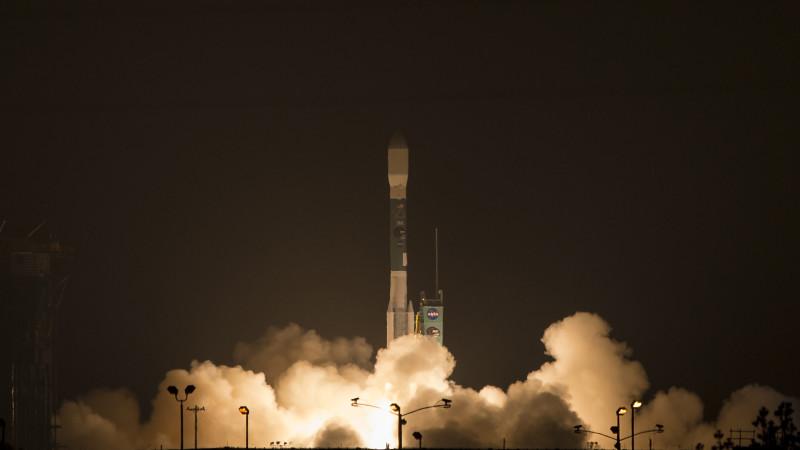News - Oman
NASA Launches Groundbreaking SMAP Observatory!
NASA successfully launched the Soil Moisture Active Passive (SMAP) observatory on 31 January at 9:22 EST (14:22 UTC) from Vandenberg Air Force Base in California on a United Launch Delta II rocket. SMAP is the first Earth satellite designed to collect global observations of the vital soil moisture hidden just beneath our feet.
Less than an hour after liftoff, SMAP separated from the rocket's second stage into its initial (411- by 425 mile/661- by 685-kilometer) orbit. SMAP now begins its three-year mission to "scratch" below Earth's surface to expand our understanding of a key component of the Earth system that links the water, energy, and carbon cycles driving our living planet.
SMAP's combined radar and radiometer instruments will peer into the top 2 inches (5 centimeters) of soil, through clouds and moderate vegetation cover, day and night, to produce (every three days) the highest-resolution, most accurate soil moisture maps ever obtained from space. The accuracy, resolution, and global coverage of SMAP soil moisture and freeze/thaw measurements will be invaluable across many science disciplines, including hydrology, climate, carbon cycle, as well as the meteorological, environmental and ecology applications communities.
As part of the SMAP-GLOBE Program Collaboration, SMAP scientists will be using "ground truth" measurements collected by GLOBE students to help validate the satellite moisture measurements and to monitor their accuracy. SMAP scientists will provide guidance on GLOBE soil moisture protocols and measurement procedures, review the data contributed by the students, and interact with the GLOBE community. (To read more about the SMAP-GLOBE partnership, click here>)
type: globe-newsNews origin: GLOBE Implementation Office






